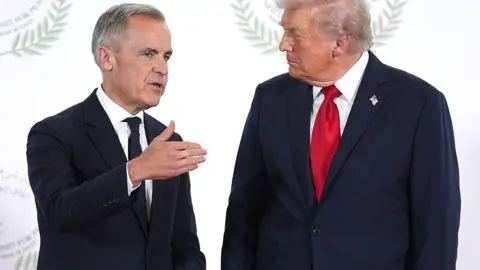In light of the escalating tariff conflicts initiated by US President Donald Trump, India finds itself at a critical juncture that may prompt significant economic reforms. Historically, the country has sought to liberalize its economy during times of adversity, as illustrated by the transformative shifts in 1991 amid severe financial distress. As Trump has increasingly criticized India’s high tariffs, labeling it a "tariff king," questions arise about whether drastic changes to trade policies are on the horizon.
India currently faces one of the highest trade-weighted average tariffs globally, standing at 12%, compared to just 2.2% in the US, 3% in China, and 1.7% in Japan. These elevated tariffs raise costs for companies reliant on global supply chains, adversely affecting their competitive edge and forcing Indian consumers to pay more for imported goods. With just 1.5% of global exports attributed to India, the urgency to address these challenges is evident. Despite experiencing growth in service exports, India has had to grapple with a substantial trade deficit.
The ramifications of Trump's tariff strategies could either compel India to embrace a more open trade posture or deepen its reliance on protectionism. Prime Minister Modi’s administration, often scrutinized for its protectionist policies, has shown signs of a strategic shift. Ahead of Modi's scheduled meeting with Trump, India implemented unilateral tariff cuts on certain US imports aimed at fostering better trade relations.
Indian Commerce Minister Piyush Goyal has made numerous visits to the US to negotiate trade terms, as analysts caution that reciprocal tariffs could cost India up to $7 billion annually. Goyal's remarks urging exporters to adopt a more assertive and confident approach signal an effort to move beyond a protectionist mindset. Moreover, India is actively pursuing free trade agreements with multiple nations, including the UK, New Zealand, and the European Union.
The landscape of India’s economy has drastically changed since the late 1990s, where its growth was fueled by progressively integrating into global markets and reducing tariffs. Presently, ongoing protectionist measures have led to criticism that Modi's "Make in India" initiative is faltering, which has hampered the drive for increased manufacturing and export capacity. Experts warn that India’s high tariffs have bred complacency and hindered investment in competitive efficiency.
As the global trading environment continues to evolve, some thought leaders assert that India's current situation presents a unique opportunity to reshape its trade vision. By reducing protectionist barriers, India could enhance its role in the regional and global trade landscape, potentially catalyzing job creation—particularly vital in light of the country's significant employment challenges outside the service sector.
Concerns persist, however, regarding the implications of a tariff reduction strategy, especially the threat of foreign dumping that could undermine local industries. It is argued that India's best approach would involve a comprehensive reduction of tariffs, with cautious measures against potential Chinese dumping due to existing trade tensions.
As India attempts to recalibrate its trading stance in response to external pressures and the evolving policies of the US, the broader narrative suggests a burgeoning consensus on maximizing the lessons learned from Trump's tariff wars. Economists advocate for aggressive reforms to better integrate India into the global economy, potentially leading to a manufacturing resurgence capable of meeting the demands of an increasingly automated global market.
In summary, India's response to the turbulent effects of Trump's tariff wars may redefine its economic landscape, pressing the nation toward essential reforms while balancing domestic concerns about protectionism and international competitiveness. The outcome of this crossroads remains uncertain, but the stakes are undeniably high for the economy and workforce alike.




















